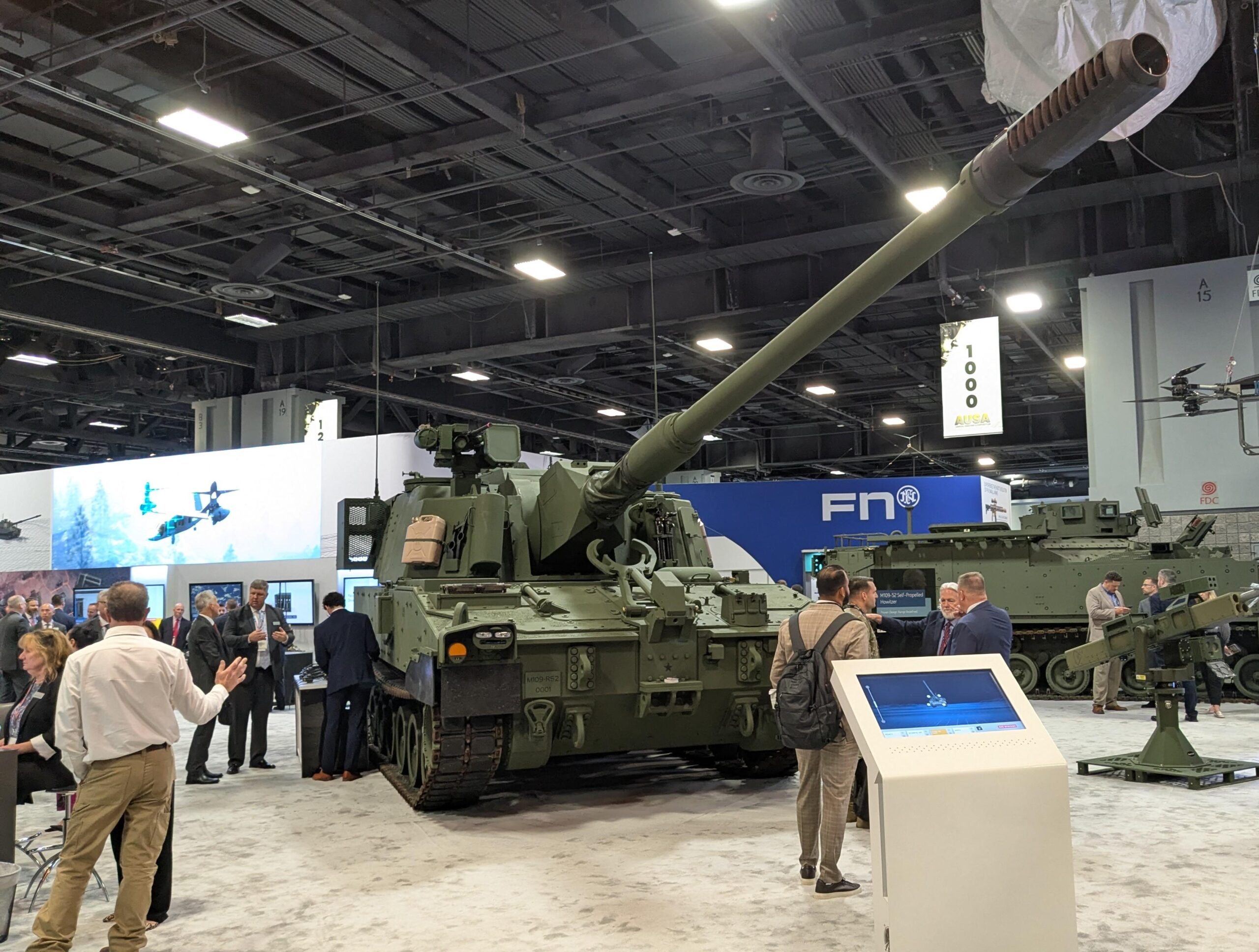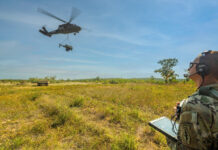AUSA 2025: BAE Systems’ M109-52 has US Army SPH requirement in its sights
Peter Felstead
BAE Systems continues to make progress with its M109-52 self-propelled howitzer (SPH), which involves integrating the proven Rheinmetall L52 155 mm gun onto the M109A7 SPH, with a view to addressing the US Army’s Self-Propelled Howitzer Modernization (SPH-M) programme.
Speaking to ESD at the 2025 Association of the US Army (AUSA) show in Washington, DC, on 13 October, Dan Furber, programme director for army ground vehicle production within BAE Systems’ Combat Mission Systems business, confirmed that BAE Systems has responded to the US Army’s request for information (RFI) for a new mobile tactical cannon under the SPH-M programme, the deadline for which was 10 October.
“I think the timeline they want is to have RFPPs [request for prototype proposals] to industry in November,” said Furber. “They want a pretty quick turn on that so they can start testing stuff next year.”
The SPH-M programme is the US Army’s fourth attempt to procure a new SPH. The previous attempt, the Extended Range Cannon Artillery (ERCA) programme, was initiated in 2018 and sought to integrate a US Army-developed 155 mm L58 gun turret mounted on an M109A6 Paladin Integrated Management (PIM)/M109A7 platform. However, engineering issues, such as excessive wear on the L58 gun barrel after firing a relatively small number of rounds, led to the ERCA prototyping effort’s discontinuation in April 2024.
Regarding what the M109-52 brings to the party, Furber said, “We are doubling the range of the M109A7, both on non-precision and precision ammunition.”
Asked if extended range is the US Army’s over-riding requirement, Furber replied, “We believe so, especially when it comes to the tracked artillery side of the house. Once you tackle the range, then you can start looking at what are the other things you need to do to improve the lethality side of the house, which could be increasing rate of fire. We are certain we are increasing rate of fire just by putting in this cannon over the 39-calibre gun that’s in the A7. Then there are some other things we could do from the development side that would further increase the rate of fire.
He explained that this could involve auto-loaders or enhanced load-assist systems beyond what is in the current M109A7, which features a load-assist system in the form of a rammer.
Asked what went wrong with the ERCA programme, Furber replied, “There was a lot of development in simultaneous swim lanes at the same time. They took on a lot of concurrency risk: new cannon, new projectiles, new propellant. And that’s where we’re coming in, with a highly mature system: both the A7 and that L52, for which there are propellants and ammunition that are already optimised for this cannon.”
Regarding the way ahead for the M109-52, Furber explained, “Our next step with this is we have partnered with DEVCOM [the US Army Combat Capabilities Development Command] on a CRADA [co-operative research and development agreement], which essentially is an agreement to partner on development of technologies for this system.
“So when you think about ERCA, they did a lot of good things. They have matured some technologies in ERCA that we want to look at how to harvest and put those taxpayer dollars to use in the future M109-52. That is exactly what we did with the A7. Future Combat Systems, NLOS Cannon: all cancelled programmes. We harvested the 600 volt architecture out of FCS and NLOS Cannon, and that’s what is driving this system today, so, from a power perspective, you name it, we can put it on here; we can integrate it. We have an ample amount of power, unlike most other combat vehicles in in the world. We are one of two combat vehicles that have 600 volt architecture. underpinning its ability to increase capabilities in the future.
Outlining BAE Systems’ strategy with the M109-52, Furber said, “We think this is the right solution set for the army: let’s go incremental, like we have throughout the history of the M109, right? Small steps. What do you need to do? Let’s take on the next one. We’ve got the right foundation; we’ve got the right backbone under this vehicle system; it’s already in the army. We are going to be very, very low from an investment cost on the part of the army to do this upgrade, whereas if you bring in a new howitzer system from somewhere else, you have a very big bill because now you have to go in and you have to look at all these other entities outside of the army: US TRANSCAM [the US Transportation Command], DOT&E [the US Department of Defense’s Director, Operational Test and Evaluation]; all these other folks are going to want to test it make sure it meets their requirements.
“There’s no other howitzer that’s designed to do what this one is for force protection, survivability, transport throughout the world, to meet the immediate needs of the warfighter. This one already meets those requirements; there’s nobody else that does,” Furber asserted.
He further explained that, when the M107A6 SPH was developed, BAE Systems already had an upgunning roadmap in mind. Consequently, when the company harvested the M109A6 turret for the M109A7 and then began to develop the M109-52 from that, “it was not much of a leap for us to put the 52-calibre cannon in this, just like it wasn’t much of a leap for the army to put the 58-calibre cannon in the ERCA. I don’t want to say we overdesigned it, but essentially we gave it enough to take that shock and gun load.”
Regarding the US Army’s future SPH requirements, various systems, both tracked and wheeled, are in the mix. Five potential SPH suppliers were awarded Other Transaction Agreement (OTA) performance demonstration contracts in October 2024: American Rheinmetall Vehicles with its wheeled 155 mm Remote Controlled Howitzer (RCH 155); BAE Systems Bofors with the wheeled Archer system; Hanwha Defense USA with the tracked K9 Thunder; General Dynamics Land Systems, which could potentially offer a new tracked SPH called Nemesis that pairs KNDS’ Artillery Gun Module with the latest GDELS ASCOD tracked platform; and Elbit Systems USA with the Sigma wheeled SPH.
While a separate US Army requirement remains for a wheeled system for its future Mobile Brigade Combat Teams (MBCTs), the M109-52’s credentials as a tracked, low-cost, home-grown solution to the SPH-M requirement are likely to put it high in the running during the US Army’s 2026 trials.














